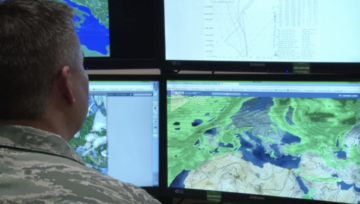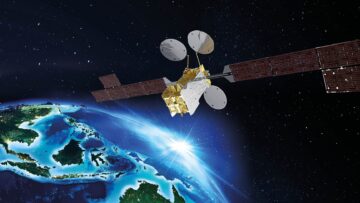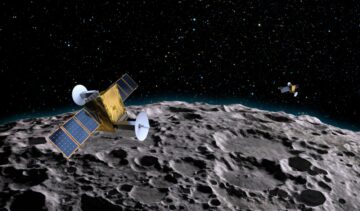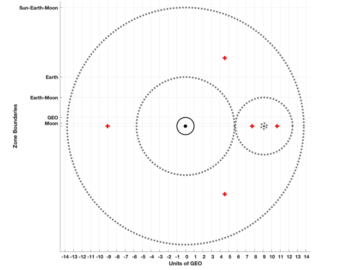The rockets that propel astronauts and satellites into space are marvels of modern technology. But for ground crews at the nation’s premier spaceports, it has been more like operating in the digital stone age.
After years of kicking the can down the road on modernization, the U.S. Space Force is now embarking on a comprehensive overhaul of the IT infrastructure used at mission control centers at Cape Canaveral Space Force Station in Florida, and Vandenberg Space Force Base in California.
These are the nerve centers where mission controllers monitor the spacecraft’s progress and manage the mission’s objectives. These operations centers rely on systems that enable communication, navigation, data management and real-time decision-making.
The launch ranges’ supporting IT architecture is crucial to the success of space missions and meeting the growing demand for access to space, but the technology is in desperate need of an overhaul, said retired U.S. Air Force Col. Chad Davis, former director of the National Reconnaissance Office’s Office of Space Launch.
Davis, now an executive at Stellar Solutions, directed 12 national security space missions on the East and West coasts.
“At Vandenberg, a lot of the infrastructure that’s there was put in place for the Space Shuttle. That’s how old it is,” Davis told SpaceNews. “They’ve been Band-Aiding it through the years but have never really done any significant overhaul.”
The antiquated IT architecture at both major launch ranges means that critical software applications, such as those used for tracking vehicle telemetry data, monitoring environmental conditions and predicting weather, operate in disconnected silos rather than as an integrated enterprise system.
Davis explained that analog IT systems are essentially immovable from the facilities they reside in, preventing seamless remote operations and data sharing across ranges and locations.
Compounding matters, the software underlying these systems was largely customized for each particular range over decades of one-off development. Most data can’t be shared and has to be manually transferred between analog systems.
It is noteworthy that the Space Force is able to manage increasing launch activity with a growing number of commercial launch providers despite the aging infra-structure, Davis pointed out.
‘Triple digit launches’
A digital transformation is being planned for both East and West coast launch ranges, with a goal to to transition mission control centers to an integrated, internet-compatible digital architecture capable of seamlessly enabling high operational tempos.
With commercial space companies like SpaceX rapidly driving up the launch cadence these upgrades are long overdue, said Maj. Jason Lowry, deputy director of technology and innovation at the Space Systems Command’s Assured Access to Space program office.
“We’re expanding very fast and we’re still using systems that were designed to support single digit launches per year, not triple digit launches per year,” he said at a forum hosted by SpaceWERX, the Space Force’s technology arm.
“Imagine a future when the U.S. is launching a rocket every day,” Lowry said.
That means moving away from ana-log stovepipes to a digital environment where data flows seamlessly and ex-perts can be virtually integrated, he added. “Clearly, we’re going to need to digitize and automate a lot of what we do to support that type of launch cadence.”
The Space Force is forecasting more than 100 launches out of the Cape this year alone, said Lowry. “And we’re also projecting a 30% year over year increase in both the Eastern and Western launch range manifests.”
The Assured Access to Space program office has an annual budget of about $2 billion for national security launch services. Despite commanding such a large budget, Lowry pointed out, “the lion’s share of our funds is dedicated to procuring rockets, leaving a comparatively small portion of our budget for upgrading our own systems that we use at our launch ranges.”
Digital architecture
The Space Force is laying out plans to work with the private sector over the next several years to migrate legacy IT to a modern software architecture. The digital transformation is expected to take years and cost hundreds of millions of dollars to complete.
The Space Systems Command and SpaceWERX are pursuing a multi-pronged strategy to revamp launch range IT systems, awarding contracts to established defense contractors as well as small businesses and startups.
The largest effort is a $444 million, five-year contract the Space Systems Command recently awarded to Science Applications International Corp (SAIC) to modernize the IT infrastructure supporting space launch operations at Cape Canaveral and Vandenberg.
Separately, SpaceWERX awarded a $15 million contract to software startup Defense Unicorns. The company will be-gin updating software applications and IT systems used for functions like weather monitoring and telemetry processing in support of rocket launches.
The service is also tapping smaller companies through its Small Business Innovation Research (SBIR) program. Space-WERX is currently reviewing proposals from dozens of companies competing for up to $40 million in SBIR contracts focused specifically on spaceport IT modernization efforts.
This initiative, known as the “digital spaceport of the future,” focuses on three main areas: infrastructure, data, and application layers. The infrastructure layer involves establishing high-quality interfaces between legacy and modern hardware and software.
The data layer requires management solutions that enable faster and more se-cure data transfer across both the open internet and government networks. The application layer involves the replacement of legacy systems with modern solutions.
SAIC’s big contract
SAIC will start overhauling the legacy IT systems at space launch ranges under a contract known as Digital Transformation, Acquisition, Modernization and Modification, or DTAMM.
DTAMM aims to modernize the instrumentation, telemetry processing, weather monitoring and other systems. According to SAIC executive vice president David Ray, the digital overhaul “is really about helping the Space Force accelerate growth and meet the needs of both government and commercial space launch.”
A key goal is integrating the two ranges’ currently isolated IT systems into a cohesive enterprise architecture. “Over the years each range has upgraded equipment differently,” Ray explained. “The equipment has to be consistent across the board.”
Automating manual processes is an-other imperative as the launch operations tempo increases. “When you have more launches, you’ve got to digitize what used to be manual so you can quickly pivot between various rockets,” said Ray.
In the near-term, SAIC will replace antiquated systems while bringing more connectivity into the ranges. Longer-term, the plan is to transition to a cloud environment, establish a software factory, and implement cybersecurity upgrades.
Ray stressed that the IT moderniza-tion is crucial for enabling commercial space companies to operate efficiently on both coasts. “Having two different architectures only makes it more diffi-cult to support an accelerated pace of launches,” he said.
Working with startups
Outside of the DTAMM program, the Space Force is leveraging commercial innovation from companies that specialize in IT migration, such as Defense Unicorns, a startup staffed by former DoD software factory developers.
“The massive growth of SpaceX launches has really accelerated the need for IT migration at the launch ranges,” said Defense Unicorns co-founder An-drew Greene.
The legacy systems the government uses are more suited to the Apollo era than the age of Starship, Greene said. “We’re talking about manual processes, limited automation and incompatibility with modern digital tools.”
Greene said the modernization challenge is immense not only because of the outdated technologies but also the U.S. government’s stringent security and compliance standards.
The clock is ticking, he said, as many systems today run on obsolete hardware that is no longer manufactured and for which replacement parts are no longer available.
Lowry, the director of innovation at Space Systems Command, explained that the work done by Defense Uni-corns and by small businesses under SpaceWERX’s SBIR program is entirely separate from the DTAMM prime con-tract. But they could eventually merge into the larger modernization effort “to bring them over the finish line, if you will.”
This article first appeared in the April 2024 issue of SpaceNews magazine.
- SEO Powered Content & PR Distribution. Get Amplified Today.
- PlatoData.Network Vertical Generative Ai. Empower Yourself. Access Here.
- PlatoAiStream. Web3 Intelligence. Knowledge Amplified. Access Here.
- PlatoESG. Carbon, CleanTech, Energy, Environment, Solar, Waste Management. Access Here.
- PlatoHealth. Biotech and Clinical Trials Intelligence. Access Here.
- Source: https://spacenews.com/the-digital-revolution-is-finally-coming-to-americas-space-launch-ranges/
- :has
- :is
- :not
- :where
- $UP
- 1
- 10
- 100
- 12
- 13
- 17
- 19
- 2024
- 24
- 300
- 41
- 46
- 5
- 50
- 6
- a
- Able
- About
- accelerate
- accelerated
- access
- According
- acquisition
- across
- activity
- added
- again
- age
- Aging
- aims
- AIR
- Air Force
- Alert
- alone
- also
- america
- an
- analog
- and
- annual
- any
- apollo
- appeared
- Application
- applications
- April
- April 2024
- architecture
- architectures
- ARE
- areas
- ARM
- article
- AS
- assured
- At
- automate
- Automation
- available
- awarded
- away
- base
- BE
- because
- been
- being
- between
- Big
- Billion
- board
- both
- bring
- Bringing
- budget
- business
- businesses
- but
- button
- by
- Cadence
- california
- CAN
- capable
- cape
- Centers
- challenge
- Clock
- Close
- Cloud
- Co-founder
- Coast
- cohesive
- coming
- command
- commercial
- Communication
- Companies
- company
- comparatively
- competing
- complete
- compliance
- comprehensive
- conditions
- Connectivity
- consistent
- contract
- contractors
- contracts
- control
- Corp
- Cost
- could
- couldn
- critical
- crucial
- Currently
- customized
- Cybersecurity
- data
- data management
- data sharing
- David
- Davis
- day
- decades
- Decision Making
- dedicated
- Defense
- Demand
- deputy
- designed
- Despite
- developers
- Development
- different
- differently
- Digit
- digital
- digital revolution
- Digital Transformation
- digitize
- directed
- Director
- disconnected
- do
- DoD
- dollars
- done
- down
- dozens
- driving
- each
- East
- eastern
- efficiently
- effort
- efforts
- embarking
- enable
- enabling
- Enterprise
- entirely
- Environment
- environmental
- equipment
- Era
- error
- essentially
- establish
- established
- establishing
- Ether (ETH)
- eventually
- Every
- every day
- executive
- expanding
- expected
- explained
- facilities
- factory
- false
- FAST
- faster
- Finally
- finish
- First
- florida
- Flows
- focused
- focuses
- For
- Force
- Former
- Forum
- from
- functions
- funds
- future
- get
- goal
- going
- got
- Government
- Ground
- Growing
- Growth
- Hardware
- Have
- he
- helping
- Hidden
- High
- high-quality
- hosted
- How
- HTTPS
- Hundreds
- hundreds of millions
- if
- immense
- imperative
- implement
- in
- Increase
- Increases
- increasing
- Infrastructure
- Initiative
- Innovation
- integrated
- Integrating
- interfaces
- International
- Internet
- into
- involves
- isolated
- issue
- IT
- ITS
- journalist
- Key
- known
- large
- largely
- larger
- largest
- latest
- launch
- launches
- launching
- layer
- layers
- laying
- leaving
- Legacy
- leveraging
- like
- Limited
- Line
- List
- locations
- Long
- longer
- Lot
- magazine
- Main
- major
- MAKES
- manage
- management
- manual
- manually
- manufactured
- many
- massive
- Matters
- max-width
- means
- Meet
- meeting
- Merge
- migrate
- migration
- Military
- million
- millions
- Mission
- Mission Control
- missions
- Modern
- modernization
- modernize
- Monitor
- monitoring
- more
- most
- moving
- National
- national security
- Nations
- Navigation
- Need
- needs
- networks
- never
- Newsletter
- next
- no
- noteworthy
- now
- number
- objectives
- obsolete
- of
- Office
- Old
- on
- only
- open
- operate
- operating
- operational
- Operations
- or
- Other
- our
- out
- outdated
- over
- Overhaul
- own
- Pace
- page
- particular
- parts
- per
- Pivot
- Place
- plan
- planned
- plans
- plato
- Plato Data Intelligence
- PlatoData
- please
- pop-up
- portion
- predicting
- premier
- president
- preventing
- Prime
- private
- private sector
- process
- processes
- processing
- Program
- Progress
- Propel
- Proposals
- providers
- publish
- pursuing
- put
- quickly
- range
- ranges
- rapidly
- rather
- RAY
- RE
- real-time
- really
- recently
- rely
- remote
- replace
- replacement
- requires
- research
- reviewing
- Revolution
- road
- rocket
- Run
- s
- Said
- satellites
- Science
- seamless
- seamlessly
- sector
- security
- separate
- service
- Services
- several
- Share
- shared
- sharing
- significant
- silos
- single
- small
- small business
- small businesses
- smaller
- So
- Software
- Solutions
- Space
- Space Companies
- Space Force
- SpaceNews
- Spaceport
- SpaceX
- specialize
- specifically
- standards
- starship
- start
- startup
- Startups
- station
- Status
- Stellar
- Still
- STONE
- Strategy
- stringent
- subscription
- success
- such
- suited
- support
- Supporting
- system
- Systems
- T
- Take
- talking
- tapping
- Technologies
- Technology
- Tempo
- than
- that
- The
- The Future
- Them
- There.
- These
- they
- this
- this year
- those
- three
- Through
- ticking
- to
- today
- told
- tools
- Tracking
- transfer
- transferred
- Transformation
- transition
- Triple
- true
- try
- Tuesday
- two
- type
- u.s.
- U.S. Air Force
- U.S. Space Force
- under
- underlying
- unicorns
- updating
- upgraded
- upgrades
- use
- used
- uses
- using
- various
- vehicle
- very
- veteran
- vice
- Vice President
- virtually
- was
- we
- Weather
- WELL
- were
- West
- Western
- What
- when
- which
- while
- will
- with
- Work
- year
- years
- you
- Your
- zephyrnet








